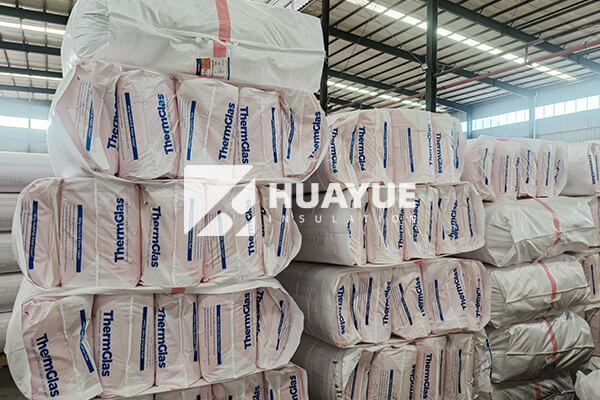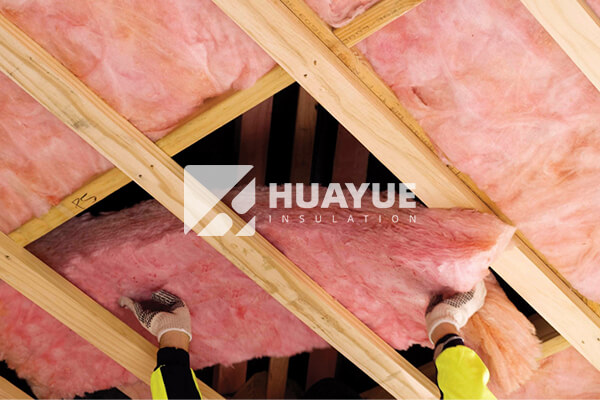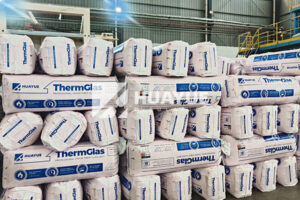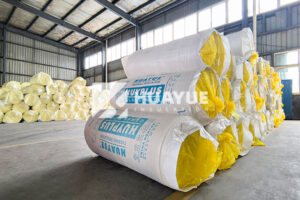Is House Fiberglass Insulation Right for Your Home?
Drafty rooms and sky-high utility bills create stress for any homeowner. Fixing comfort problems while lowering energy costs is possible—fiberglass insulation is a proven solution.
Fiberglass insulation improves energy efficiency and indoor comfort by reducing heat loss in winter and heat gain in summer. It is made from recycled glass spun into fibers and is easy to install in walls, attics, and floors.

A large part of my work includes helping people solve their energy and comfort issues at home. Sometimes, the problems seem so big they’re impossible to solve. But when you see how straightforward and reliable fiberglass insulation is, trust becomes easier. Let’s look at why this material could be the right fit for your home and how it works.
What is Fiberglass Insulation?
Old or poorly insulated houses often feel uncomfortable year-round. Fiberglass insulation solves this by managing temperature swings inside your home.
Fiberglass insulation is a lightweight, affordable material used to minimize heat transfer inside walls, attics, and floors. It helps keep homes warm in winter, cool in summer, and lowers energy bills.

When I visit a home, I often find homeowners surprised by how simple fiberglass insulation looks. It comes in soft, fluffy batts or rolls, packed with tiny glass fibers. This design traps air, creating a barrier against outdoor temperatures. I explain to people that fiberglass insulation remains effective for decades. Its durability and fire resistance give homeowners peace of mind. Unlike other materials that might settle or degrade, fiberglass does not shrink. The safety and long-term performance stand out, especially for families focused on healthy living and smart investments in their property.
Fiberglass Insulation Technical Specs
| Feature | Description |
|---|---|
| Material | Recycled glass spun into fibers |
| Appearance | Soft batts or rolls, often pink or yellow |
| Applications | Walls, attics, floors, crawl spaces |
| Installation | Laid or fitted between studs/joists |
| Lifespan | 30+ years with proper installation |
| Fire Resistance | Non-combustible, improves home fire safety |
What is Fiberglass Insulation Made Of?
People worry about toxins in building materials. Fiberglass insulation sets itself apart with reliable safety and a clean manufacturing process.
Fiberglass insulation is made from recycled glass and sand, which are melted and spun into thin fibers. Binders and sometimes a bit of color are added, then formed into batts or rolls.
I remember touring a manufacturing facility where you could see the process firsthand. The giant furnace melted glass, which was then forced through tiny holes to create a web of fibers. The production line carefully formed these fibers into fluffy, lightweight batts. This process means fiberglass is mostly made from safe, natural ingredients—glass and sand. There are no burning plastics or hidden ingredients. For families looking for eco-friendly and safe materials, fiberglass fits well. Its recycled content helps the environment, and careful production controls maintain quality.
Summary Table: Fiberglass Insulation Composition
| Ingredient | Function |
|---|---|
| Recycled Glass | Main insulation material |
| Sand | Melting, fiber stability |
| Binders | Holds fibers together |
| Coloring Agents | For identification |
How Does Fiberglass Insulation Work?
Most people are aware that insulation helps, but they rarely understand how. Fiberglass works by trapping air and blocking the movement of heat.
Fiberglass insulation prevents heat transfer by trapping tiny pockets of air between its fibers, creating a barrier that slows heat flow into and out of rooms.
I tell homeowners to imagine their walls with endless layers of tiny air pockets. Heat tries to move from warm spaces to cool spaces, but fiberglass insulation stands in the way. In cold winters, it blocks warmth from escaping. In summer, it resists heat coming in. The fibers are packed just enough to block air flow without compressing too much—otherwise, insulation loses its power. This is why I always recommend proper installation. Gaps or compressed insulation reduce effectiveness. When installed carefully, fiberglass insulation is one of the best performers for the cost.
How Fiberglass Stops Heat Transfer
| Heat Transfer Type | Insulation Action |
|---|---|
| Conduction | Air pockets slow heat flow |
| Convection | Limits air movement |
| Radiant Heat | Fibers disperse heat energy |
What is Insulation R-Value?
When I talk with customers, they are often confused about R-value. It’s actually the most important number to understand for energy savings.
R-value measures how well insulation resists heat flow—a higher R-value means better insulation performance and greater energy savings at home.
R-value is simply a score for insulation strength. The thicker and denser the fiberglass, the higher the R-value. Building codes set minimum R-value requirements for different regions because climates differ. For example, northern homes need more insulation in attics than southern homes. When considering a project, I always help people choose the right R-value for their climate. Too little insulation wastes energy and money. Too much may not deliver a good return. I remind homeowners: check R-values, understand local codes, and look for professional advice.
Common R-Values for House Applications
| Area of Home | Typical R-Value Range |
|---|---|
| Attics | R-30 to R-60 |
| Walls | R-13 to R-21 |
| Floors/Crawl Spaces | R-13 to R-30 |
What Are the Pros and Cons of Fiberglass Insulation?
Every building material has trade-offs. Fiberglass insulation stands out for many reasons, but it also has limits that homeowners need to know.
Fiberglass insulation is cost-effective, widely available, and easy to install, but it can irritate skin during installation and lose performance if compressed or wet.

In my experience, homeowners find fiberglass insulation affordable and reliable. It’s easy to upgrade existing homes quickly. On the plus side, it’s fire-resistant and never attracts pests. The product doesn’t shrink or settle much, even after years. However, I always warn people to wear gloves and masks; the fibers cause itchiness. Large water leaks can reduce its performance, and it does not stop air leaks by itself. If you live in a hurricane or flood region, be extra cautious about moisture. I recommend pairing fiberglass insulation with quality air sealing for the best comfort and savings.
Pros and Cons Table
| Pros | Cons |
|---|---|
| Affordable | Skin/respiratory irritation on install |
| Excellent fire resistance | Less effective if wet or compressed |
| Easy to install | Needs proper air sealing for best results |
| Durable & pest resistant | Not a sound barrier material |
Conclusion
Fiberglass insulation is a long-lasting, effective choice for improving home comfort and energy efficiency, but proper installation and understanding the pros and cons are essential for best results.
You may also be interested in:
Ready to Get Started?
Get in touch with our experts for personalized solutions tailored to your needs.
Get Free QuoteLatest Articles

Glass Wool Fire Rating: How Safe Is Your Insulation?
Dec 25, 2025
Let's Work Together
Ready to take your business to the next level? Get in touch with our team of experts and let's discuss how we can help you achieve your goals.
Get Free Solutions






